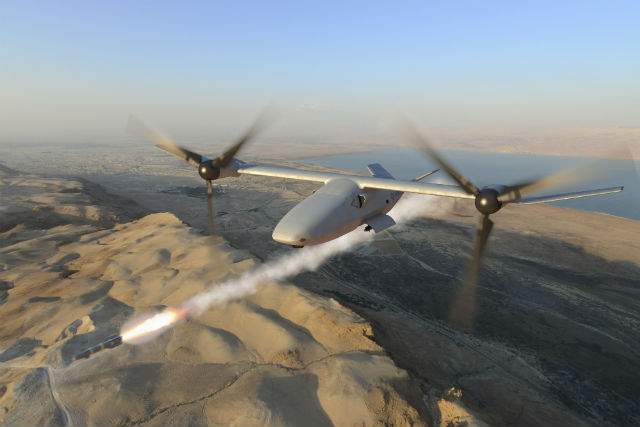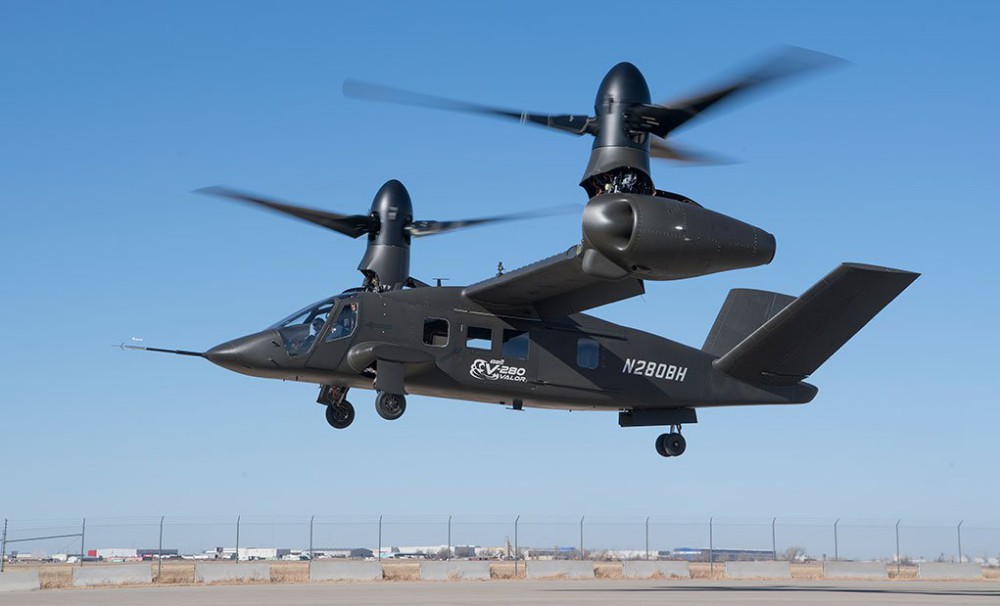Bell Helicopter is continuing through the preliminary design review stage of its V-247 Vigilant unmanned tiltrotor, as it waits for its intended US Marine Corps customer to deliver precise requirements for the programme.
Launched in 2016, the V-247 is a self-funded development, which Bell is producing to address an emerging USMC need for a long-range expeditionary aircraft.
Known as MUX, the programme is designed to end a number of “capability gaps” identified by the service, says Keith Flail, the manufacturer’s vice-president of advanced tiltrotor systems.
Proposed missions span intelligence, reconnaissance and surveillance, precision strike, and cargo replenishment, says Flail, with key factors “runway independence” and the ability to fit inside hangars aboard the US Navy’s destroyer fleet.
Bell is continuing to liaise with the USMC to ensure its design does not diverge markedly from any eventual requirement.
Flail says preliminary specifications point towards a group 4 or 5 unmanned air vehicle – which have maximum take-off weights of up to, or beyond 560kg (1,320lb), respectively. Endurance is around 6h, with a range of 450nm (834km). However, he points out that this may change as the USMC’s requirements solidify.
Any next step would involve a request for information from the service and “we are standing by for that”, says Flail.
Bell is also working on the V-280 Valor tiltrotor for the US Army. Although a larger, manned aircraft, Flail believes that effort will provide “enormous risk reduction” for the Vigilant development.
“A lot of the technology we are maturing on the V-280 will carry over well to the V-247,” he says, citing production techniques and flight control systems as two key areas.
On previous generation tiltorotors, such as the Bell Boeing V-22 Osprey, the entire engine assembly tilts as the aircraft transitions from one flight mode to the other.
However, on the V-280, only the prop-rotors move, while the engines remain fixed, in order to improve side access to the aircraft.
Although the unmanned Vigilant is not designed to transport troops, the airframer is “looking at a similar configuration” for the V-247, says Flail.
“There’s a recipe for what works and as the V-247 team has been off looking at configurations, that’s the configuration we are going for.”
Bell has also yet to decide on whether to locate an engine on either wing, or to use a single, centreline powerplant, says Flail.
Meanwhile, Bell is slowly accelerating the rate of test flights on the V-280 as the envelope of the new tiltrotor expands.
The V-280 was first flown on 19 December 2017 and, as of 22 January, it had accumulated 2.7 flight hours, with 38.7h of rotor turning time.
In mid-January, four flights were performed during the same week, with two sorties taking place on the same day.
Source: FlightGlobal


